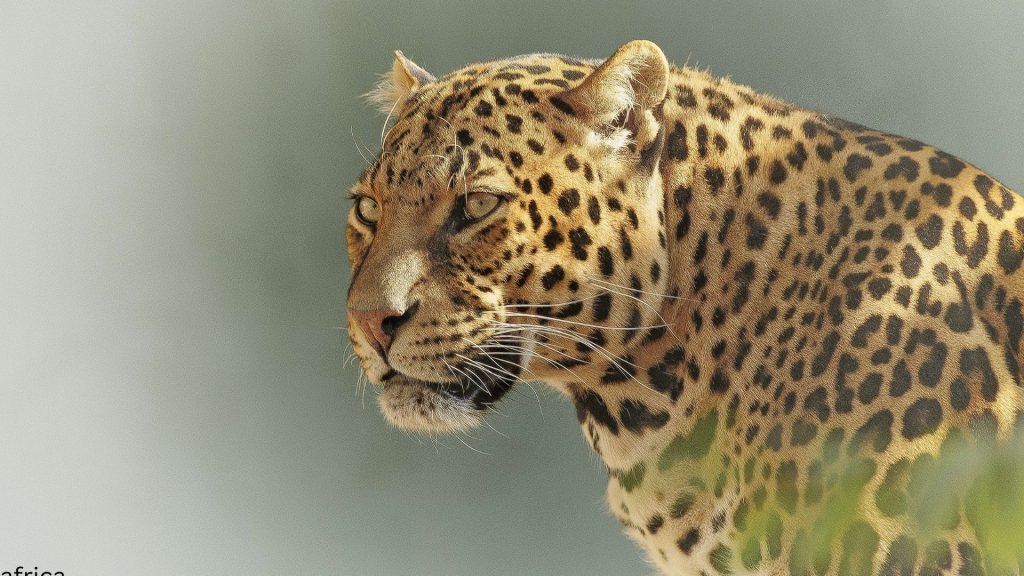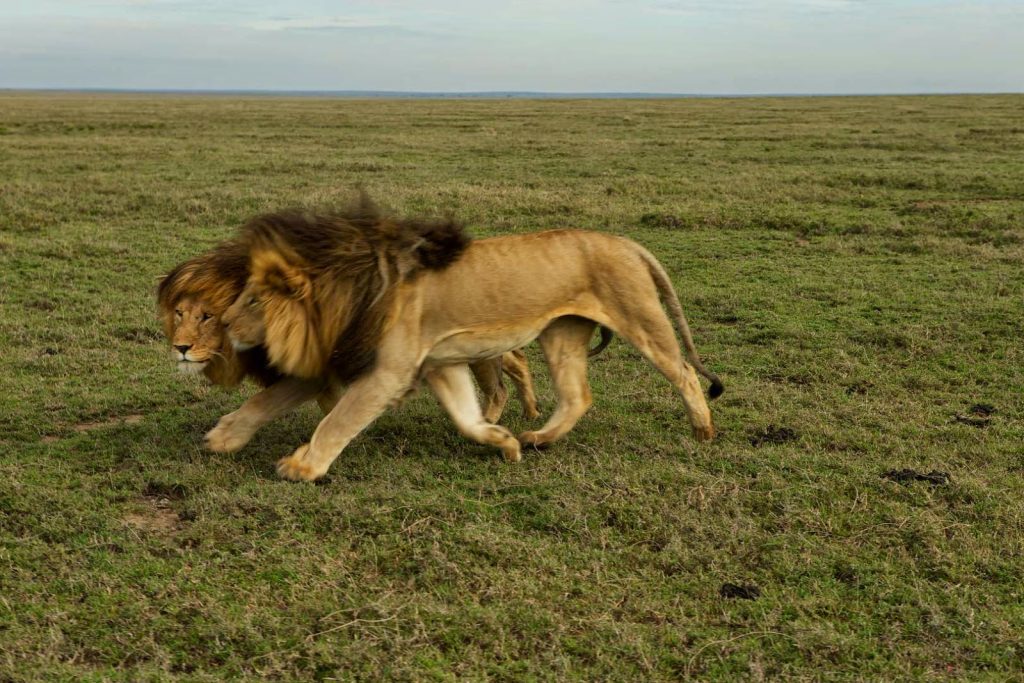Tanzania Birding Safari
Tanzania is one of the finest bird-watching destinations in Africa, with 1140 species, including 200 migrants and 74 marine birds present. Tanzanian birding safaris are best in the rains for migrants and residents in breeding plumage. The preeminent birding locations include Arusha National Park, with 400 birds in a diversity of habitats contained in a small area. You may observe a white-faced whistling duck, with its whistling three-note lament, or a dusky flycatcher. Tawny eagles and buzzards hover above Ngurdoto Crater, whilst the Momella Lakes are the place for water birds and waders. Lake Manyara National Park offers pink flamingos, pelicans, storks, cormorants, hornbills, and many more, with over 400 recorded species. Greater and lesser flamingos are also found in Ngorongoro Crater, and millions mass on their breeding ground at Lake Natron. Tarangire’s swamps are home to over 550 species, with weighty kori bustards, ostriches, secretary bird’s and helmeted guinea fowls on the drier plains, where weavers and lovebirds are also common. A Serengeti 500 birding species safari reveals endemic Fischer’s lovebird, a bright-hued small parrot also found in Ngorongoro Conservation Area, grey crowned crane, and the brown snake eagle. Buff-crested bustards and spike-heeled larks nest on the plains below Mount Kilimanjaro, best known for Abbot’s starlings with white bellies and purple capes, alpine hill chats, and scarlet-tufted malachite sunbirds, whilst lammergeyers haunt its upper slopes. A bird-watching trip to the southern parks with Kiwoito Africa Safaris overlaps the ranges of both southern and eastern species. With over 440 recorded listings for the vast Selous Game Reserve, the Rufiji and the Great Ruaha Rivers provide ideal habitats for mangrove kingfishers, yellow-billed stork, malachite kingfishers, African skimmers, and palm-nut vultures.
A twitcher’s paradise, Ruaha National Park holds 570 species, including the yellow-collared sunbird, giant kingfisher, and ashy starling. Katavi also has a large population of waterfowl in the wet season. Zanzibar protects 268 species, including the great frigate bird, African paradise flycatcher, forest batis, buff-spotted flufftail, and stunning Fischer’s turaco with an iridescent blue cap and wings. An African birding holiday among the river inlets and mangroves of Saadani finds many migratory waders amongst its 400 species. The Eastern Arc Mountains are important, with 30 short-range endemic species. Kitulo Plateau National Park is the place to spot the blue swallow and Denham’s bustard, while Mkomazi Game Reserve shelters Friedmann’s lark and Shelley’s starling. The Udzungwa Mountain forests protect Udzungwa partridge, olive-flanked robin-chat, white-chested alethe, and Sharpe’s akalat. The Uluguru Mountains contain Love Ridge’s sunbird and the Uluguru bush-shrike. While the Usambara Mountains are not well-studied, a forest birding-watching tour will find globally threatened Usambara eagles, Sokoke and scops owls, long-billed tailor birds, and Usambara weavers, while Lindi coastal forests contain Livingstone’s flycatcher and southern banded snake eagles. Kiwoito Africa Safaris , a Tanzanian avian vacation to visit the most likely feathered habitats with a trained spotter and guide to assist you to add many amazing checkmarks, birding photos, and videos to your visual checklist
Yellow necked spurfowl
The Yellow necked spurfowl (Pternistis leucoscepus; also known as the yellow-necked francolin) is one of the more audible birds of Tarangire and seems to take sadistic pleasure in sitting outside your tent at dawn and letting forth a piercing, scratchy, and never-ending the call. Although it might not look like it this bird, which is widespread throughout much of East Africa, is a member of the pheasant family.
A large brown francolin with yellow bare skin on the throat and red bare skin around the eyes. The bill and legs are black. Pale patches in the outer wings are conspicuous in flight. Found in a variety of fairly arid savanna habitats and in adjacent agricultural fields. Usually in pairs or small groups. Easily separated from other francolins by its bare yellow throat. The call is a fading series of rough “kreaaak” notes
Northern white-crowned shrike
The Northern white-crowned shrike (Eurocephalus rueppelli or white-rumped shrike) is an insect eater that can often be seen perched on branches or the backs of large mammals scanning the ground for insects. The shrike builds a cup-like nest out of spider webs and grass and it’s thought that it might be a cooperative breeder, which means that babies are brought up not just by the parents but by additional group members.
A bulky, large-headed vanilla-and-brown shrike. Singles and small groups of up to 6 inhabit open broadleaf woodland and riverine woodland in arid savanna, where they prefer to perch conspicuously on taller trees that are adjacent to bare ground. They perch and watch for invertebrates, which they hawk off trunks or hunt on the ground, before returning to a sentinel perch. They may form the core of mixed-species flocks and have been recorded following hornbills and eating prey they disturb. They have many calls, the most characteristic of which is a distinctive, shrill plover-like “kleeew-keeuw.”
Black-necked weaver
An acacia tree festooned in intricately sewn weaverbird nests is one of the classic images of East Africa. There are numerous species of weavers in Africa (they’re also found in parts of Asia), including the red-billed quelea, which is thought to be the most numerous wild bird on Earth. Weavers are best known, though, for their incredible nests, which, in the case of many weavers, are woven together from grasses and, in the case of some species, including the black-necked weaver (Ploceus nigricollis) shown here, a conical-shaped nests with a long, downward-facing entrance tunnel.
A medium-sized, dark-eyed weaver in which males and females are distinctly different, but both are colorful. Varies geographically: upperparts are black in the east and brownish-black in central Africa. Found in woodland, thick scrub, moist savanna, gallery forest, and forest clearings and edges. Usually alone or in pairs. Vocalizations are typical of weavers: “chet” notes and a sizzling, “radio static” song. Formerly treated as the same species as the Olive-naped Weaver, under the name “Black-necked Weaver.”
White-faced whistling duck
The white-face whistling duck (Dendrocygna viduata) is a common, noisy, and gregarious species that at times can occur in huge flocks. Its distribution patterns are interesting because it’s found only in eastern and southern Africa and South America though as yet nobody is sure how it managed to originally travel from one to the other (a helping human hand has been suggested).
Striking duck with black-and-white head, rufous breast, and barred flanks. Like all whistling-ducks, long neck and legs give it a gooselike appearance. Found in freshwater marshes, lakes, and rice fields. Usually in flocks, sometimes numbering in the hundreds. Quite widespread in South America and Africa. Feeds at night
African marsh harrier
Common throughout eastern and southern Africa near larger bodies of water, the African marsh harrier (Circus granivorous) is the smallest of all the marsh harriers. Although classed as Least Concern by the IUCN, the species is thought to be in decline thanks to the loss and destruction of its wetland habitat.
Large, brown, wetland harrier. Like all harriers, it has long, slender wings and tail, and graceful, swooping flight. Found in and around marshes, swamps, and wet grasslands. Dark brown overall coloration separates it from all other harriers except the female Eurasian Marsh-Harrier. African Marsh-Harrier can be identified by the presence of barring in the wings and tail, as well as by its darker head
Pygmy falcon
The diminutive and very pretty Pygmy falcon (Polihierax semitorquatus) is, at just 19-20cm in length, the smallest raptor on the continent. It’s so dainty that it lives inside the abandoned nests of white-headed buffalo weavers. One of its favorite foods is small birds, though it leaves the weavers it lives among alone.
Iny gray-and-white falcon that is similar in size to a shrike, though chunkier. The back is brown in females and gray in males. The white rump is conspicuous in fast, slightly undulating flight, which is very different from that of a typical falcon. Found in arid savanna, where it breeds in the nest of a Sociable Weaver or buffalo-weaver. Often perches up in the open, usually in pairs or small family groups. The call is a fast series of rasps or squeals.
Woodland kingfisher
The large, striking, common woodland kingfisher (Halcyon senegalensis) is found throughout much of sub-Saharan Africa. In Tanzania, it’s a permanent resident, but populations in the northern and southern limits of the bird range migrate to and from central and eastern Africa with the rains. They can be aggressively territorial and have even been known to attack humans!
A medium-sized, electric-blue-backed kingfisher with a distinctive bicolored bill: red above and black below. Pairs and singles mostly hunt insects in taller dry woodland, riverine forest, and forest edges. Its loud and characteristic call is a high-pitched “tuuui”, followed by a pause and then a trilling, down-slurred “trrrrrrrrrrrrrrrrr”. Sometimes it advertises by sitting upright, extending its wings to show a bold wing pattern, and calling.
Black-headed heron
The black-headed heron (Ardea melanocephala) is a large bird that can stand up to 85cm and has a wingspan of a meter and a half. It’s normally found close to water, where it remains statue-still until a fish, frog, or some other suitable snack swims past; at this point, the heron stabs its prey at lightning speeds with its sharp beak.,
A large, grayish heron of drier habitats; note distinctly dark cap and nape contrasting with white throat. In flight the underwing is strongly contrasting black-and-white. The juvenile is duskier and duller. It walks slowly, hunting for small animals, and is often found far from water, foraging in burnt grassland or open savanna, though it may also occasionally haunt a pond or quiet river bend. Juveniles resemble juvenile Gray Herons, but juvenile Black-headed Herons have slate-gray rather than yellow legs
African Hoopoe
With its distinctive coloration and large crest of feathers on its head, the hoopoe (Upupa epops) is an unmistakable bird. It’s perhaps for this reason that hoopoes feature in so many legends, religious texts, folklore, and superstitions throughout much of its African and European range. The hoopoe was considered sacred in Ancient Egypt and is depicted on the walls of Egyptian temples, it was a hoopoe that was said to have brought news of the Queen of Sheba to King Solomon and it was a hoopoe that Islamic tradition says saved Moses and the children of Israel from being crushed by a giant Og (don’t ask us for a photo or description of one of these though!) after they’d crossed the Red Sea. In much of Europe, hoopoes are considered the bearers of bad luck and be thieves, in Scandinavia, they bring war with them and in Estonia they foretell death, but in ancient Persia, they were considered a symbol of virtue and in Ancient Greece, they were thought of as the King of birds.
Ostrich
Everybody knows what an ostrich (Struthio camelus) looks like, and in Tarangire, visitors will get to see lots of them. Huge and very powerful, ostriches are the largest living birds. They can weigh up to 145kg, and males can be anywhere from 2.10 meters to 2.60 meters tall. Flightless, they can, though, run at speeds of up to 70km/h, which makes them the world’s fastest two-legged animal. They can be aggressive, and they have a kick and a peck powerful enough to break bones. They lay the largest eggs of all birds. Contrary to popular belief, they don’t bury their head in the sand when frightened. In this picture, the ostrich is taking a sand bath to remove dead skin and ticks, and other insects



